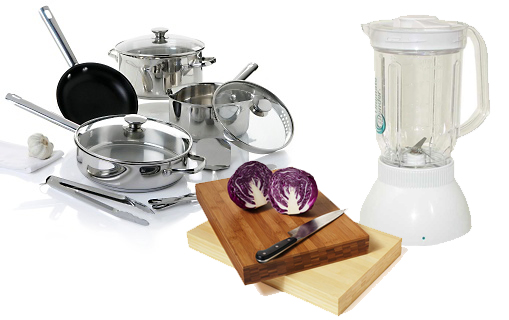Addressing CDC Risk Factor Number 4: Contaminated Food Or Equipment
Cross-Contamination
Contamination of food or equipment such as work surfaces, cutting boards, utensils, and dishes by transferring bacteria to them is referred to as cross contamination. Ensure food contact surfaces are clean and sanitized regularly after coming into contact with food or food related products.

|
Preventing cross contamination is one step to help eliminate foodborne illness. There are three (3) main ways cross contamination can occur:
1. Food to Food
Bacteria from one type food can contaminate another food. This type of cross contamination is especially dangerous if raw foods come into contact with cooked or prepared foods. Some examples are:
a.) In a refrigerator, meat drippings from raw meat stored on a top shelf might drip onto cooked vegetables placed on a lower shelf.
b.) A cooked hamburger patty placed back on a plate with raw patties may be contaminated by raw meat juices.
|
2. People to Food
People can also be a source of cross contamination to foods. Some examples are:
a.) Handling foods after using the toilet without properly washing your hands.
b.) Touching raw meats and then preparing vegetables without washing hands between tasks.
c.) Using an apron to wipe your hands between handling different foods, or wiping a counter with a towel and then using the towel to dry your hands.
|
3. Equipment to Food
Contamination can also be passed from kitchen equipment and utensils to food. This type of contamination occurs when the equipment or utensils are not properly cleaned and sanitized between each use. Some examples are:
a.) Using unclean equipment such as slicers, can openers and other utensils to prepare food.
b.) Reusing cutting boards or the same knife when cutting different types of foods, such as cutting raw chicken followed by salad preparation.
c.) Placing a cooked product, such as chicken on the plate used for the raw product.
|
Preventing Cross Contamination
Follow these steps to prevent cross contamination and reduce hazards to food:
1. Wash your hands in between handling different foods.
2. Wash and sanitize all equipment and utensils that come in contact with food.
3. Avoid touching your face, skin, and hair or wiping your hands on soiled cleaning cloths.
4. Store foods properly by separating washed or prepared foods away from unwashed or raw foods.
5. Store food and food-related items 6 inches off the ground on tables, shelving or on pallets.
6. Condiments must come individually wrapped or containers must be the pump type, squeeze containers, or have self-closing covers.
|
|
|
